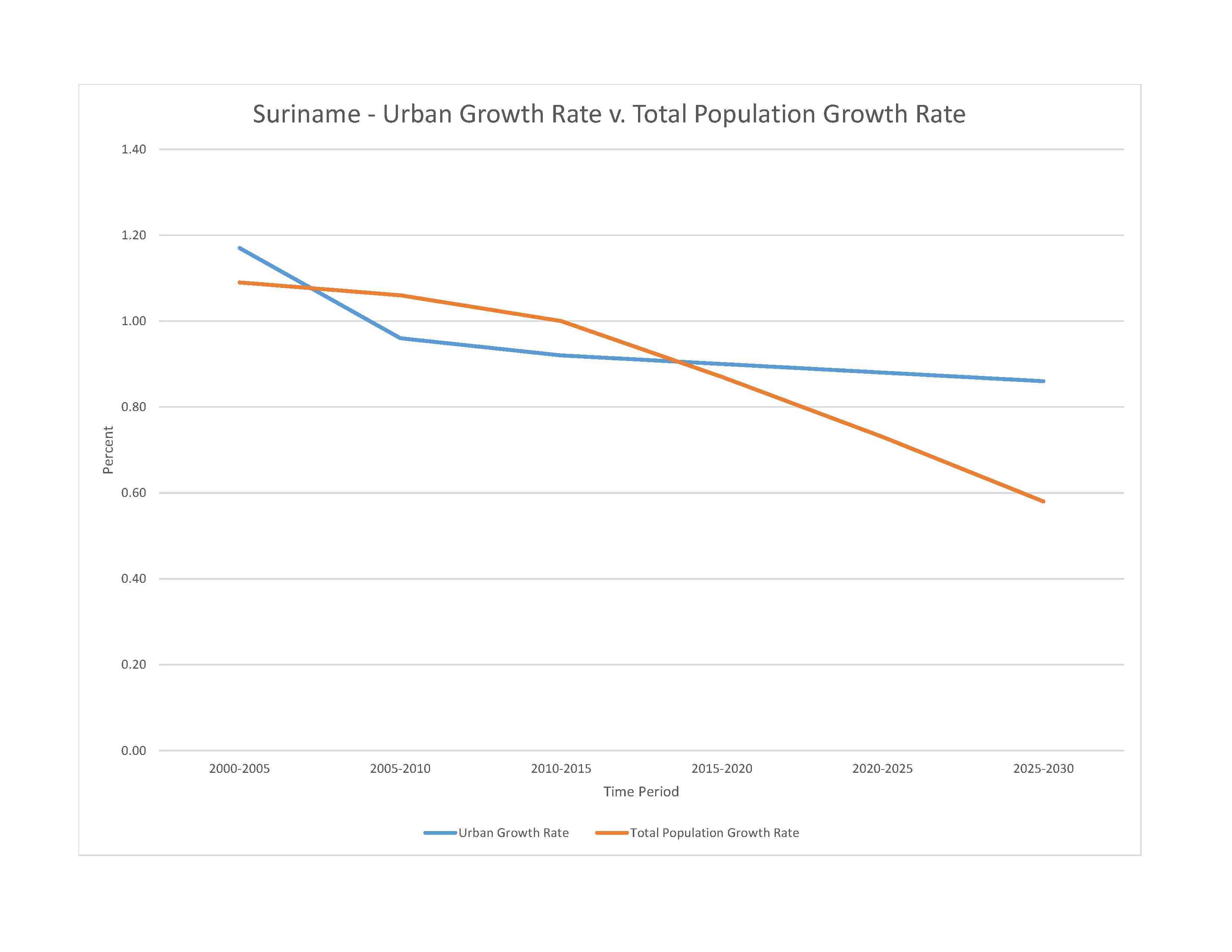
639,759 (2023 est.)
noun: Surinamer(s)
adjective: Surinamese
Hindustani (also known locally as "East Indians"; their ancestors emigrated from northern India in the latter part of the 19th century) 27.4%, Maroon (their African ancestors were brought to the country in the 17th and 18th centuries as slaves and escaped to the interior) 21.7%, Creole (mixed White and Black) 15.7%, Javanese 13.7%, mixed 13.4%, other 7.6%, unspecified 0.6% (2012 est.)
Dutch (official), English (widely spoken), Sranang Tongo (Surinamese, sometimes called Taki-Taki, is the native language of Creoles and much of the younger population and is lingua franca among others), Caribbean Hindustani (a dialect of Hindi), Javanese
major-language sample(s):
Het Wereld Feitenboek, een omnisbare bron van informatie. (Dutch)
The World Factbook, the indispensable source for basic information. (English)
Protestant 23.6% (includes Evangelical 11.2%, Moravian 11.2%, Reformed 0.7%, Lutheran 0.5%), Hindu 22.3%, Roman Catholic 21.6%, Muslim 13.8%, other Christian 3.2%, Winti 1.8%, Jehovah's Witness 1.2%, other 1.7%, none 7.5%, unspecified 3.2% (2012 est.)
Suriname is a pluralistic society consisting primarily of Creoles (persons of mixed African and European heritage), the descendants of escaped African slaves known as Maroons, and the descendants of Indian and Javanese (Indonesian) contract workers. The country overall is in full, post-industrial demographic transition, with a low fertility rate, a moderate mortality rate, and a rising life expectancy. However, the Maroon population of the rural interior lags behind because of lower educational attainment and contraceptive use, higher malnutrition, and significantly less access to electricity, potable water, sanitation, infrastructure, and health care.
Some 350,000 people of Surinamese descent live in the Netherlands, Suriname's former colonial ruler. In the 19th century, better-educated, largely Dutch-speaking Surinamese began emigrating to the Netherlands. World War II interrupted the outflow, but it resumed after the war when Dutch labor demands grew - emigrants included all segments of the Creole population. Suriname still is strongly influenced by the Netherlands because most Surinamese have relatives living there and it is the largest supplier of development aid. Other emigration destinations include French Guiana and the United States. Suriname's immigration rules are flexible, and the country is easy to enter illegally because rainforests obscure its borders. Since the mid-1980s, Brazilians have settled in Suriname's capital, Paramaribo, or eastern Suriname, where they mine gold. This immigration is likely to slowly re-orient Suriname toward its Latin American roots.
0-14 years: 22.77% (male 73,914/female 71,762)
15-64 years: 69.96% (male 223,807/female 223,762)
65 years and over: 7.27% (2023 est.) (male 19,152/female 27,362)
total dependency ratio: 50.9
youth dependency ratio: 40
elderly dependency ratio: 11
potential support ratio: 9.1 (2021 est.)
total: 31.6 years (2023 est.)
male: 30.7 years
female: 32.6 years
1.11% (2023 est.)
15.2 births/1,000 population (2023 est.)
6.6 deaths/1,000 population (2023 est.)
2.5 migrant(s)/1,000 population (2023 est.)
population concentrated along the nothern coastal strip; the remainder of the country is sparsely populated
urban population: 66.4% of total population (2023)
rate of urbanization: 0.88% annual rate of change (2020-25 est.)

239,000 PARAMARIBO (capital) (2018)
at birth: 1.07 male(s)/female
0-14 years: 1.03 male(s)/female
15-64 years: 1 male(s)/female
65 years and over: 0.7 male(s)/female
total population: 0.98 male(s)/female (2023 est.)
96 deaths/100,000 live births (2020 est.)
total: 29.9 deaths/1,000 live births (2023 est.)
male: 38 deaths/1,000 live births
female: 21.3 deaths/1,000 live births
total population: 72.6 years (2023 est.)
male: 68.9 years
female: 76.5 years
1.91 children born/woman (2023 est.)
0.92 (2023 est.)
39.1% (2018)
improved: urban: 99.5% of population
rural: 98.2% of population
total: 99.1% of population
unimproved: urban: 0.5% of population
rural: 1.8% of population
total: 0.9% of population (2020 est.)
6.8% of GDP (2020)
0.82 physicians/1,000 population (2018)
3 beds/1,000 population (2017)
improved: urban: 98.5% of population
rural: 91.2% of population
total: 96% of population
unimproved: urban: 1.5% of population
rural: 8.8% of population
total: 4% of population (2020 est.)
degree of risk: very high (2023)
food or waterborne diseases: bacterial and protozoal diarrhea, hepatitis A, and typhoid fever
vectorborne diseases: malaria
26.4% (2016)
total: 6.6 liters of pure alcohol (2019 est.)
beer: 3.4 liters of pure alcohol (2019 est.)
wine: 0.14 liters of pure alcohol (2019 est.)
spirits: 2.87 liters of pure alcohol (2019 est.)
other alcohols: 0.18 liters of pure alcohol (2019 est.)
6.7% (2018)
52.1% (2023 est.)
women married by age 15: 8.8%
women married by age 18: 36%
men married by age 18: 19.6% (2018 est.)
5% of GDP (2020 est.)
definition: age 15 and over can read and write
total population: 95%
male: 96.5%
female: 93.4% (2021)
NOTE: The information regarding Suriname on this page is re-published from the 2024 World Fact Book of the United States Central Intelligence Agency and other sources. No claims are made regarding the accuracy of Suriname 2024 information contained here. All suggestions for corrections of any errors about Suriname 2024 should be addressed to the CIA or the source cited on each page.
This page was last modified 04 May 24, Copyright © 2024 ITA all rights reserved.